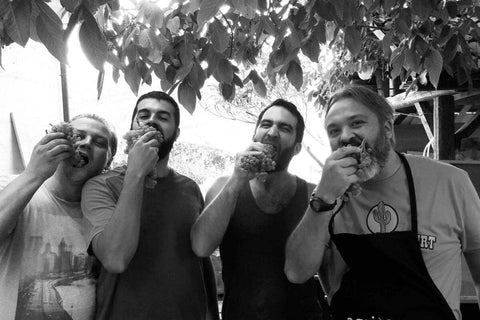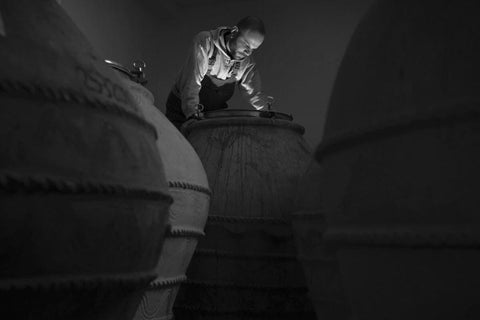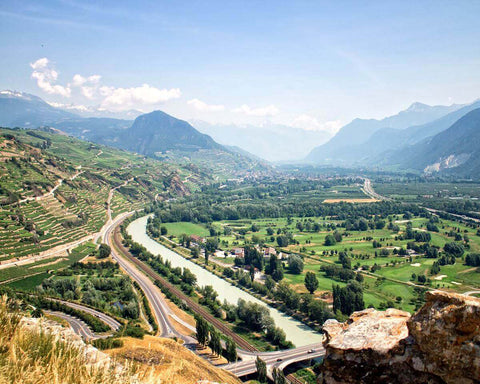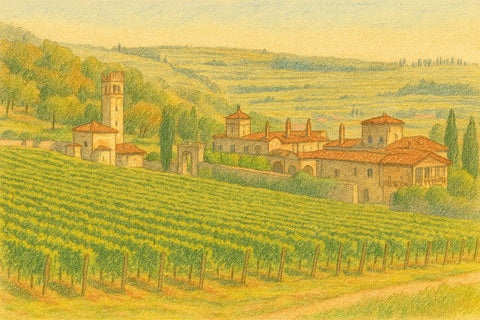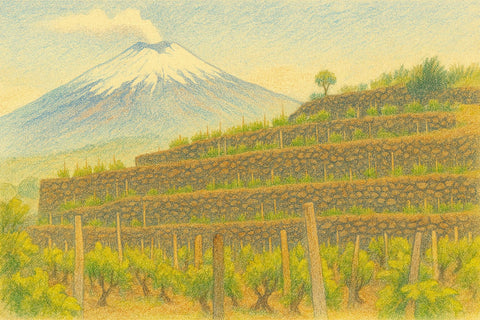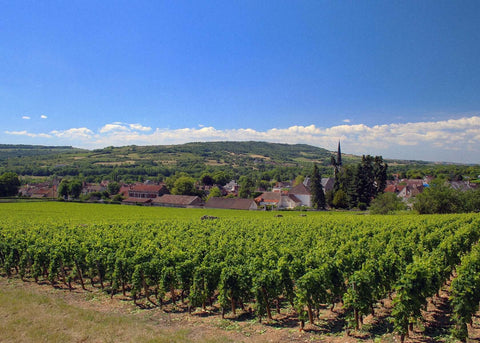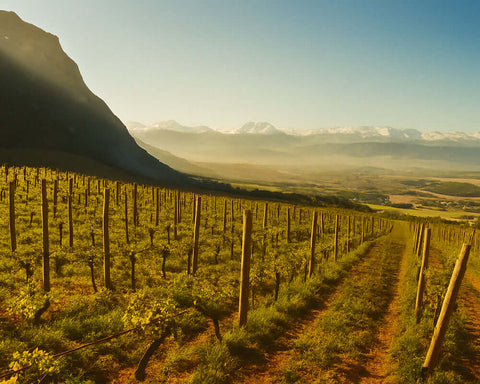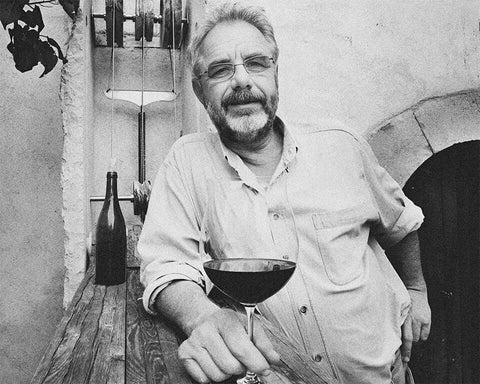Today we are talking about wild wines. A natural wine primal mantra welcomes you as soon as you land on Cantina Indigeno’s homepage:
“In the vats the must shakes off the sugars and procreates the alcohol.
Grape skins thicken by the sides, raiding polyphenols, the tannic infantry surges from the stems as if from a wartime trench.
Amphoras transpire: they have swollen their clay womb welcoming the winter sleep of the grapes.
A wind blows through the ancient presses lined up along the path of the spiders by the woods, so as to breath life and oxygen towards the barrels.
Like a fleeting afterthought, from its fiberglass minaret, a bubbler whistles and excises the otherworldly silence.
As the equinox folds unto the carapace of light, in the corners of the ancestral cellar, fairies consecrate themselves to the indigenous yeasts.”
Cantina Indigeno, now flag-bearers of primal and wild wines, is a passion project born from the wild dreams of 4 friends - Alfredo Giugno, Nicola Reginaldi, Fabio Petrella, and Loreto Lamolinara - who have long been possessed by the demon of fermentation, not only with regards to wine but beer as well.
Alfredo is an unassuming accountant by day and beer-brewer by night, obsessed by the mysteries of any kind of fermentation. In 2013 he opens with Loreto, then distributor of craft beers, the micro-brewery La Casa di Cura (“the Sanitarium” in Italian) in Crognaleto, in the mountainous hinterland of Teramo. A pivotal point in the birth of Indigeno was the meeting with Nicola, the real trait d’union linking all the stories together.
Nicola was the owner of Monkeys pub in Teramo, sommelier since 2013 and long since batshit crazy about natural wines. He was the one who pushed the wild soon-to-be Indigeno guys to drink and experiment as much as possible and by doing so he nurtured their passion. The Indigeno crew was also encouraged by their good friends from Lammidia, one of the most beloved young natural wineries in Abruzzo. In other words, the perfect storm.
And so the boys began their adventure by renting and working some old vineyards of Montepulciano and Trebbiano. Perched atop their lair nearby Montorio al Vomano in the mountainous region of Abruzzo, the alpha and omega of rugged and wild beauty, the Indigenos are united by their will to give birth to wines which are alive, fresh, authentic and as direct as a Tomahawk to the forehead.
It goes without saying that to make the wines sing and dance and then howl ferociously to the gods we’re talking strictly natural agriculture, spontaneous fermentations, no invasive cellar practices, no temperature control, filtration, fining, or the tiniest hint of any added SO2.
Their vinnaturist manifesto is inherently political in the noblest sense of the word, and it shines through eminently in their striking, rebellious and rather tongue in cheek labels. In most of them, the recurring theme is a totem, symbolizing a deep belonging to and unshakable link to terroir. The focus is authenticity and rooting in a tradition that coexists with a daring desire to experiment.
The vinnaturist tribes of all lands contemplate the idol carved on the totem rediscovering the joy of genuine, soul-filled, uncompromising wines. The Indigeno guys are young, brash and ironic but nevertheless hyper-focused on their idea of wine and, although they’re all the rage in NYC’s or SF’s hippest wine bars, light years away from any vacuous and trend-driven wine hipsterism.
Grape varietals are the children of Abruzzo’s terroir, usually as low in alcohol as vertiginously high in-depth and unashamed drinkability: Trebbiano d’Abruzzo, Montepulciano d’Abruzzo, Montonico, and Pecorino, among others.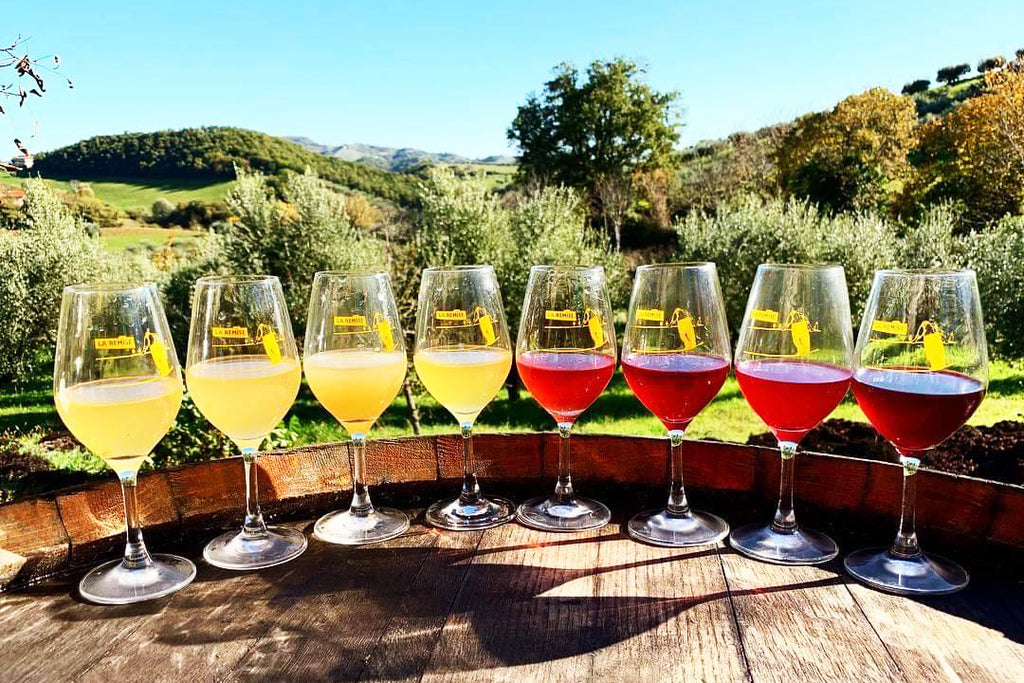
Japan, now their second export destination, and other markets soon followed, with just a small percentage of their wines gracing Italy. The first vintage - 2016 - was therefore all sold mostly in the US and Japan. The 5,000 bottles produced in 2016 doubled with the 2017 vintage and for 2018 about 25,000 bottles were made thanks to some vineyard acquisitions.
Upon visiting the US on a #wildwine tour last year the Indigeno boys were taken aback by how much their wines were well-known (way more than in Italy) in the ever-growing natural wine scene, both wine bars, and wine shops, but also more and more among more generalist drinkers. Japan will probably be the next stop on this tour and, being Japan the oldest, biggest and most sophisticated natural wine market on the planet and maybe in the galaxy - you can go buy bread or toilet paper and find uber-rare vintages of Cantina Giardino or Radikon - mass hysteria and conspicuous casualties can reasonably be expected.
Each of Indigeno’s wine is a feral, vibrant and delightful elemental spirit, changing with the seasons, years - although they sell out too quickly for most mortals to verify - and within minutes once it’s poured in the glass.
The tribal warlords of Indigeno haven’t been around for long but the Great Macerative Spirit of the vinnaturist Verb burns bright within their hearts and loins. They may look playful and happily savage Abruzzo-hobbits - they are, in a way - but they’ve got a clear vision which shines through in their wines: wine is drunk to feel good and connect to a terroir, often in good company, not to be timidly sipped after observing it and classifying but to be avidly drunk and lived.
As we hope you partake of the ineffable indigenous goodness these wines radiate we bid you farewell until the next vinnaturist adventure.
